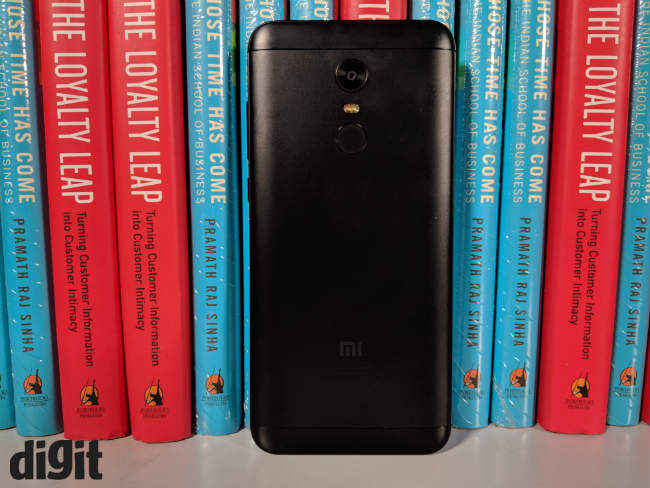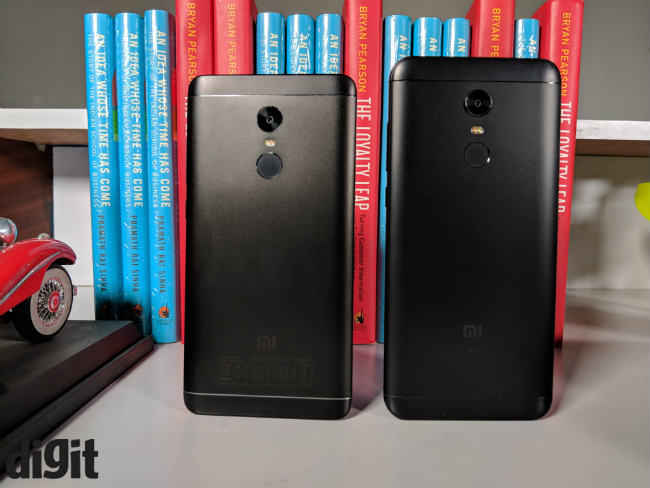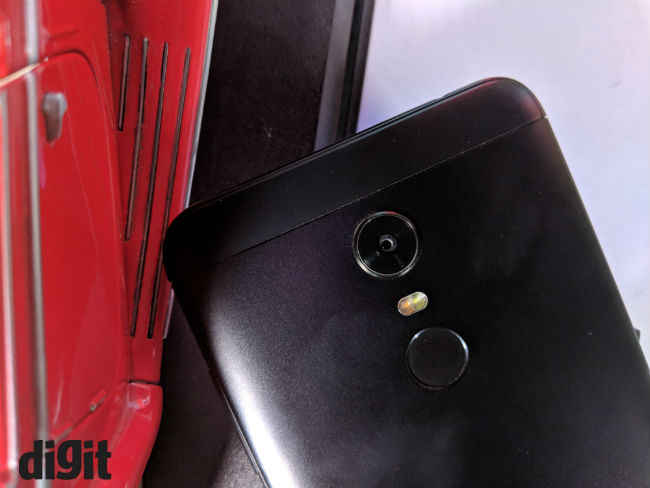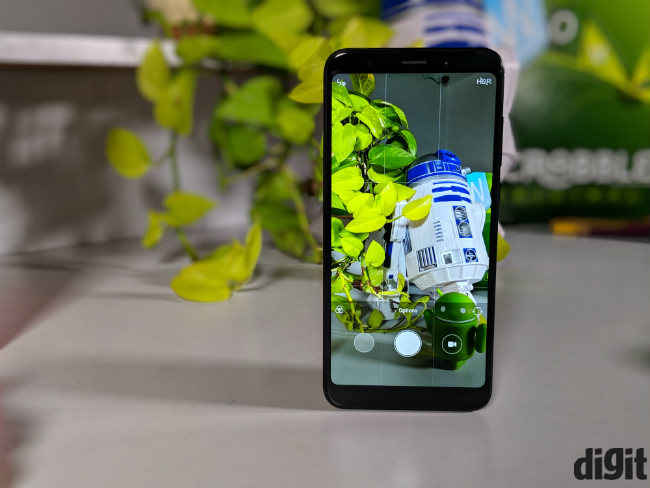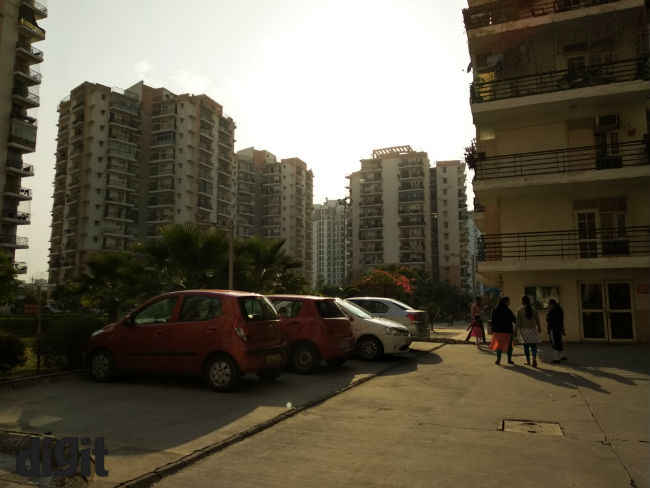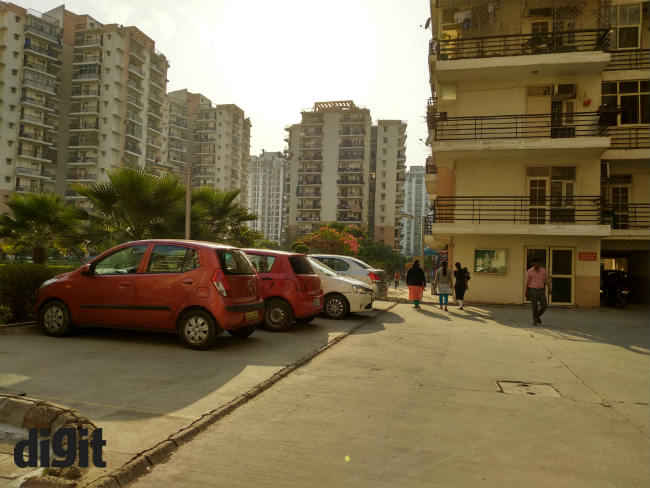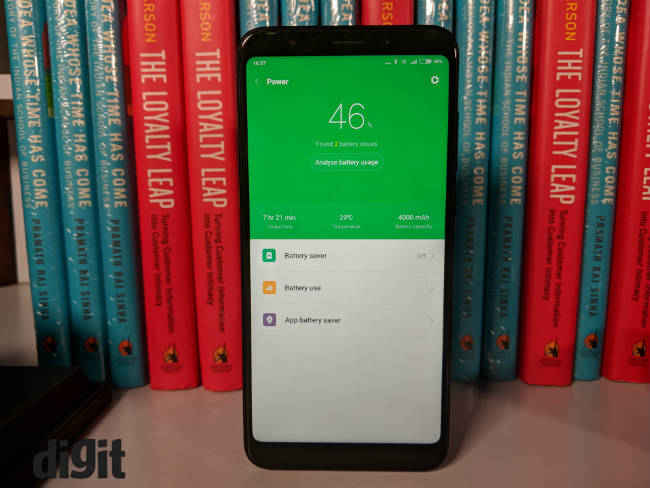Xiaomi Redmi Note 5 Review : Same wine, new bottle
Simply by looking at the spec sheet, the Redmi Note 5 can be said to be a Redmi Note 4 disguised under a brighter, taller 18:9 display. But spec-sheets rarely tell the full story. Despite having the same hardware, a lower entry-point in terms of pricing means the same hardware is now more affordable, which will allow Xiaomi to welcome more users to its ecosystem. More importantly, those same users will not be left disappointsed.
The Redmi Note 5 features a bright, tall univisium display, has a better camera than its predecessor (not necessarily the best), and comes with a stellar battery life. It’s everything you can ask from a budget smartphone. If there’s any company that knows how to strike a balance between performance, imaging and battery life, it has to be Xiaomi and the Redmi Note 5 is one of the best example of the fact.
But over the course of the year, Xiaomi’s position at the top came under threat multiple times from the likes of Honor with the Honor 7X and the excellent crop of Moto G5 and Moto G5s smartphones that ran stock Android and offered a different experience compared to Xiaomi’s MIUI. Xiaomi itself launched the Mi A1 powered by the latest stock Android and in a poll conducted (and ended prematurely) by Xiaomi on social media a couple of days back, users increasingly voted for stock Android against MIUI.
It was clear that the days of Xiaomi’s monopoly in the mid-range market are coming to an end. And right when the crown was slipping from its hands, the Chinese upstart launched the Redmi Note 5 and the Redmi Note 5 Pro. Just like a certain Cupertino-based company Xiaomi likes to be inspired by, it reserved the big upgrades for the elder Redmi Note 5 Pro (review), while the Redmi Note 5 only gets the taller display and an upgraded camera.
If this is indeed Xiaomi’s strategy for this year, it could find it difficult to command the same dominance it had last year. By depriving the cheaper variant of a significant upgrade, the Redmi Note 5 may not be taken as a serious contender for your hard-earned money. Nevertheless, the Redmi Note 5, even with the aged hardware, is still a well-balanced device. The juice out of the 4,000mAh battery is astonishingly long-lasting and the new display is going to turn heads. But is that all? Or are there more surprises on offer? We find out.
Build and Design: Late to the party, but well dressed
After a year of Redmi phones donning the same fashion, the Redmi Note 5 is a welcome upgrade. But it does retain some of the retro charm. Despite the taller univisium display, it’s not exactly bezel-less. The top and bottom parts of the screen are quite spacious and a thin, but distinct, black borders runs along the edge of the display keeping it from being truly bezel-less. The corners around the screen are nicely curved to match the corners of the body which makes the content on the screen look a little more seamless.
The old world charm I spoke of earlier is present heavily when you turn the phone around. The rear part is as much seeped in the past as the front is marching forward to the present. It’s an ugly contradiction, really. Apart from the slight difference in width and a rather ugly camera bump, there isn’t much separating the Redmi Note 5 from its predecessor. Ergonomically speaking, it’s not really a bad thing. The rear-mounted fingerprint sensor is still in the most accessible position while the diamond-cut lines render a premium feel.
Can you tell them apart?
Xiaomi’s choice of materials in building the Redmi Note 5 is interesting. The phone is made out of a combination of metal and plastic. The top and bottom sections that house the antennas are plastic while the rest of the phone is made out of metal. Not only does that improve cellular connectivity, it also improves the durability. Metal is more resistant to wear and tear but plastic is a better shock absorber and quite resistant to bends and dents when dropped.
There is an overall symmetry in the design that gives a polished and minimalist feel to the phone. The speaker grill below is matched by another grill on the side for the main microphone. It irked me to find an old micro-USB port instead of a USB-Type C which is quickly becoming the standard. Yet another instance of the phone’s inclination to stick to the past. The symmetry continues along the rear central column housing the camera unit and the fingerprint sensor and on the top is the endangered 3.5mm headphone jack proportionally next to the popular IR-blaster.
The Redmi Note 5 will be offered in four colours — Black, Gold, Rose Gold and Blue. We received the black variant for our review but I particularly have an eye for the blue one.
Display: Taller, sharper, brighter
Xiaomi did spark the trend of bezel-less displays since the original Mi Mix two years back, but the whole of last year saw only one Xiaomi phone in India with the taller univisium display, that too on its successor, the Mi Mix 2. At the same time, rivals Honor, Oppo and Vivo came out with multiple phones with 18:9 displays leaving Xiaomi trailing behind. The Redmi Note 5 addresses that gap and comes with a taller 5.99-inch full HD+ (2160×1080 pixels) IPS LCD display. It takes up most of the real estate. Also, despite the taller display, the Redmi Note 5 maintains the width of a traditional 5.5-inch panel, so you get more screen real estate to play with.
The Redmi Note 5 is not the first phone to sport a taller 18:9 display in its price range, but it’s surely one of the better looking. It’s pleasantly bright with a luminescence rating of 570 nits with auto-brightness turned off. The typical Xiaomi signature of warm tones, deep contrasts and darker blacks are all there. At full brightness, the display may feel a little washed out and sunlight legibility is just about enough.
Xiaomi also offers some customisation to the display, notably in offering three colour modes (warm, standard and cool) and two contrast modes. Truth be told, you will be better off keeping the colours in ‘standard’ mode and maintaining the ‘automatic contrast’ option. There is also a nifty reading mode that puts a monochrome tint over the display much like an e-ink panel.
I did note that the auto-brightness detection is a bit off. It takes some time for the panel to adjust the brightness and contrast to the ambient light. This, however, could be fixed via a future update.
Camera: Small jump, giant leap
The internal hardware inside budget and mid-range phones have become standardised nowadays. It’s easy to predict the chipset and the memory of a device by looking at the price tag. The only differentiating factor, and indeed the most sought after feature, is the camera. The Redmi Note 4’s hardware specs were aped by most of its rivals, but it’s imaging prowess was one of the primary reasons why the phone sold like hot cakes. With a legacy like that, the Redmi Note 5 had a hell of a lot to prove, and prove it did.
For the most part, the camera on the Redmi Note 5 is indeed better than its predecessor. But nothing stellar though. It’s the sort of evolutionary improvement you would expect from one generation to another. The Redmi Note 5 has new camera hardware in the form of a new 12-megapixel sensor with larger 1.25um pixels and f/2.2 aperture. The combination of the larger pixel size and lower aperture allows more light to fit into individual pixels with lesser spillage. The results are better detail reproduction, improved dynamic range and deeper contrasts.
Although, this isn’t the best Xiaomi has to offer. The larger Redmi Note 5 Pro is actually the one with a better camera(s). There is a vertically aligned dual camera stack with one sensor purely for depth-sensing that makes for some stellar imaging capabilities.
Nevertheless, the Redmi Note 5 takes photos that are good and social-media friendly.
Camera app
The Redmi Note 5’s camera is a breeze to use. If you have used a Xiaomi device before, you’ll feel right at home. I particularly like the touch-to-capture option along with the multitude of filters it offers to ‘artify’ the photos. There are multiple modes as well and accessing them isn’t quite as difficult. Finding the ‘settings’ menu of the app is a task though. It’s hidden inside the ‘options’ menu, but once you find it, scroll all the way down and you can tweak the contrast, saturation and sharpness of your photos and even change the aspect ratio all the way up to 18:9.
The pro mode leaves a lot left to be desired though. You can only tweak the white balance and ISO settings. Having the option to play with the shutter speed would have been a welcome addition.
White Balance & Macro
After spending some time with the phone, I realised the image sensor is quite sensitive, so much so, that the performance is somewhat inconsistent. The phone was quick to adjust the white balance of a scene completely with just a slight change in framing the photo.
A slight change in framing throws the white balance off completely
In the same samples, you can also see the seriously good detail reproduction. This is the work of the larger 1.25um pixel size in the sensor. Granted, the depth of field isn’t quite as prominent as a phone with a dual camera can produce, but it’d be an injustice to not appreciate the output.
Indoor light
The camera on the Redmi Note 5 is also high on contrasts. This is more apparent in indoor shots with a singular source of light. The camera darkens the edges of the frame to prevent the light from spilling out and overexposing the shot, keeping the area under focus well-lit. This is by no means, an accurate shot, but it’s pleasing to the eye, and for most buyers of budget smartphones, that’s all that matters.
HDR and Outdoor landscapes
Shot without HDR
Shot with HDR on
As for the dynamic range, the Redmi Note 5 is not the best, but it’s certainly better than most. HDR is turned off by default, but once you turn it on, you can notice the difference it makes to the photo when taking shots against direct sunlight by lighting up the portions that are shadowed by the sun.
If you are shooting under a sunny sky, prepared to see highly warmified images. Xiaomi does have a history of making its cameras produce warmer photos, but it seems to have hit the peak with the Redmi Note 5. The images come out warm(ish) even when the sky outside is overcast.
Also, the HDR mode is slow to process the images. It’s not exactly a shutter lag, but the camera app just freezes when the photo is processing. You cannot take one HDR shot right after another which is a bummer.
Lowlight
While the sensor takes in more light, details are missing and outcome is noisy
If the Redmi Note 5 is any indication, low-light photography is going to remain mostly the same. Like most other mid-range and budget smartphones, low-light shots lack focus, they are noisy, and there is significant loss in detail and sharpness. The larger pixel does manage to capture more light but due to a lack of stabilisation of any sort, even a slight movement of the phone or the objects in the frame will result in blurred shots.
Filters
Shot with Tunnel Filter on
Filters drive the world of social media crazy and hidden inside the camera app, deep inside the filters menu are some of the wackiest features I have seen on a smartphone in this segment. Scroll right to the end of the filters and you will find ‘Tunnel’ that renders a warped effect to the photo while other features renders mirror, fisheye and other effects.
Shot wih BW filter on
I particularly like the BW filter on the phone and managed to capture some artsy, aesthetic shots using the filter.
Front Camera
Left: Front Camera with flash off Right: Front Camera with flash on
If you are a selfie-addict, I suggest you give this one a skip and go for the elder Redmi Note 5 Pro. The 5-megapixel front camera is just about adequate to capture your face. There’s heavy softening effect with the beauty-mode turned on. The front camera is also accompanied by a front-facing flash to apparently improve low-light selfies. But if you have to take a selfie where the light is poor, the flash won’t do you much good. Instead, it will cast a harsh shadow in the background and the result is not so pleasing.
Performance: Same hardware, same performance
While most phones evolve in terms of internal hardware over a generation, the Redmi Note 5 seems once again stuck to the past, using the same internals as its predecessor. It’s surprising to see a Xiaomi phone evolve with stagnated performance.
The Snapdragon 625 is clearly Xiaomi’s favourite chipset and it’s what powers the Redmi Note 5. Granted that the larger Redmi Note 5 Pro is the true successor of the Redmi Note 4, and the company perhaps believes in the philosophy of “don’t fix what ain’t broken” as the Snapdragon 625 is one of the most power efficient mid-range chipset in the market. Xiaomi has, in fact, made it even more affordable.
The Redmi Note 5 is offered in 3GB and 4GB RAM variants. We received the SKU with 4GB RAM which is once again the same as its predecessor. Back then, the 4GB RAM felt adequate to handle the heavily-skinned MIUI 8, but with MIUI 9, there is only about 600MB RAM available after some time of use. It should be even lesser for the 3GB RAM variant although we haven’t tested the phone out. That’s not quite adequate and a little more stress will likely slow the phone down. However, on its own, the Redmi Note 5 feels quite snappy to use. Apps don’t take much time to load and games run just fine with minimal stutters.
You get 64GB storage with the 4GB RAM variant and 32GB storage with the 3GB RAM variant. In this day and age, 32GB may not feel quite as adequate and I would recommend to go for the 64GB version, not only for more RAM, but for the larger boot space.
The Redmi Note 5 powered by the Snapdragon 625 works and behaves exactly like all other phones with the same chipset. There really aren’t any surprises. Even the benchmark results are in the usual range. They are slightly better but that could be because of the under the hood optimisations that MIUI 9 brings to the table.
The Snapdragon 625 chipset is fast and power-efficient thanks to its 14nm architecture. In my opinion, it’s a good thing Xiaomi didn’t go for the newer Snapdragon 450 chipset which is almost as good as the Snapdragon 625 but with an inferior GPU, lower clock speed and an older modem.
If you are looking for a boost in performance, this isn’t the version to go for. The larger Redmi Note 5 Pro is of course faster than this one. It comes with a faster and newer Snapdragon 636 processor and for the price that it’s being offered, it’s a steal of a deal.
Software: New interface, old Android
Xiaomi’s MIUI has carved a niche for itself. You either like it or hate it. There’s reason for both. While the interface is snappy, minimalistic and packed with nifty features, it doesn’t run on the latest version of Android. Nor will you be seeing an update anytime soon. The Redmi Note 5 runs on MIUI 9 based on Android 7.1.2 Nougat. That’s quite disappointing as Android Oreo has been out there for quite sometime now, but Xiaomi has other plans.
The company’s end-game is well known. Xiaomi wants to lock you down to its own ecosystem and MIUI is at the thick of it. For the most part, the hardware is just the chariot for the experience MIUI offers. With similar internals, the Redmi Note 5 could’ve been just another mid-ranger on a budget, if not for the painstakingly customised interface.
Under the hood, MIUI 9 brings in a bunch of optimisations including the newer F2FS file storage format, real-time defragmentation and dynamic resource allocation, among other things. While there is no way to check how much these feature improve the performance, the mere fact that MIUI 9 feels a lot faster than the older version speaks a lot.
The Redmi Note 5 running MIUI 9 houses a lot of apps that come pre-installed. There’s Mi Drop which is Xiaomi’s file transfer app. You also get a dedicated video player, music app, an all new photo editor and more. A big facelift in the interface comes in the form of the card-based content screen when you swipe right from the home screen. It houses relevant information, app shortcuts, etc. in the form of cards. The nifty ‘Quick Ball’ offers another way to navigate the phone while ‘Dual Instance’ allows two accounts of the same app to run on the phone.
Annoyingly enough, the phone also comes with Amazon Shopping, WPS Office and Hungrama pre-installed. Thankfully, they can be uninstalled. There are also two apps for the same thing — Music, Gallery, Browser, etc. which takes up precious storage and cannot be deleted.
A common quip I’ve had while using a Xiaomi device is the lack of an app drawer. I have a habit of installing a lot of apps and over time, they just pile up on the home screen. Maybe Xiaomi should think about giving an option to have an app drawer, like Honor does with EMUI.
Battery Life: Good luck running out of charge
Earlier, I mentioned the camera as one of the primary reason for the Redmi Note 4’s success. Even more important for the phone was the stellar battery life it boasted. That same 4,000mAh battery is carried over to its successor as well, and once again, the battery life lasts way over a day and then some.
The Redmi Note 5, despite its aged internals, has more juice to offer than its predecessor. The same 4,000mAh battery lasted 720 minutes on PCMark’s Work 2.0 battery test which is astonishingly long. It’s going to be a task draining this battery.
The discharge is slow and steady. After a regular work day that involved a hour of listening to music, some more hours browsing social media and little less than that reading articles and taking photos, interspersed by occasional phone calls and replies to messages online, I had around 40 percent of juice left. That’s more than what most flagship phones offer and if you need a phone that lasts long (really long), this is without a doubt the phone to get.
The Redmi Note 5, quite suprisingly has stuck with the older micro-USB port which supports regular 5V/2A and charges the phone by 30 percent in about 30 minutes of charging. That’s means you can’t quickly charge the phone as there’s considerable capacity to fill. It takes around two hours to charge the phone to maximum capacity. However, seeing how the battery lasts well over a day, it’s likely you will only have to charge the phone once every night.
Bottom line
The review may come off as positive, but truth be told, the Redmi Note 5 is really the Redmi Note 4 fitted with a taller display and a slightly better camera. If you are using the Redmi Note 4, it may not be justifiable to buy this one. The more powerful Redmi Note 5 Pro is much more justifiable for an upgrade.
However, if you are evolving from a budget phone, or even looking for a reliable mid-ranger, the Redmi Note 5 is undoubtedly one of the best out there.
It’s only the start of 2018 and there will be a multitude of phones in the mid-range price segment and it’s likely that with newer hardware, the Redmi Note 5 may be rendered obsolete quicker than its predecessor.
Nevertheless, the Redmi Note 5, with its bright 18:9 display and a decent camera, should enjoy the moment till it lasts.
How it compares
The Redmi Note 5 will not be a headturner when placed among the current crop of mid-range phones. It lives under the shadow of its elder sibling, the Redmi Note 5 Pro, but that doesn’t discount the fact that it’s an able performer. What it’s not is a better performer than the competition. At its price, it has the same experience as phones from last year.
When pitched against the competition, the phone wins particularly in terms of battery life and the display quality. The camera quality may not be at par with what the Honor 7X or the Moto G5 Plus has, but it’s enough to get appreciated on social media, and that’s mostly what people want.

